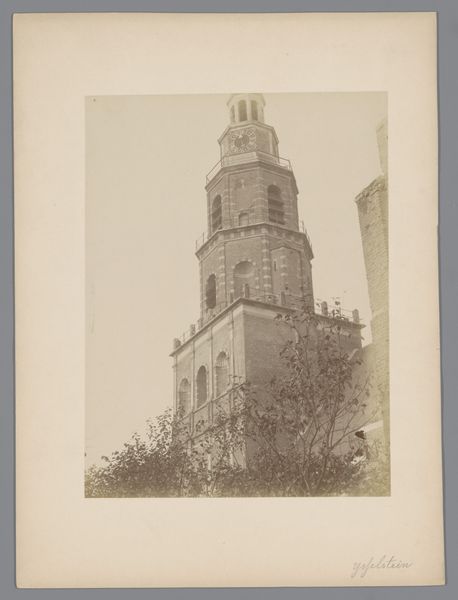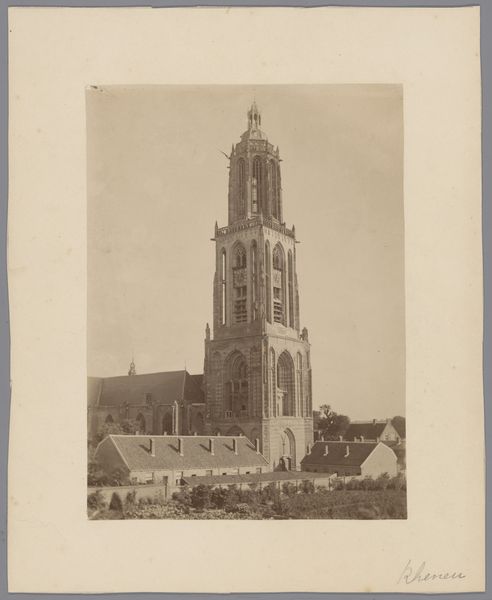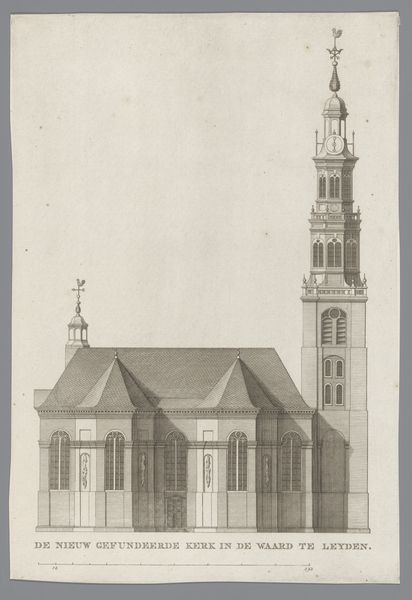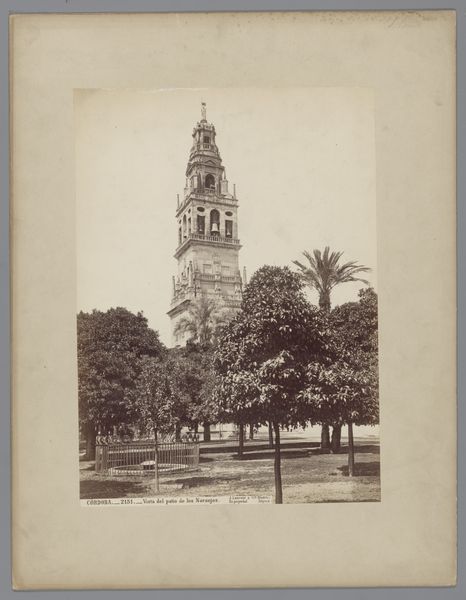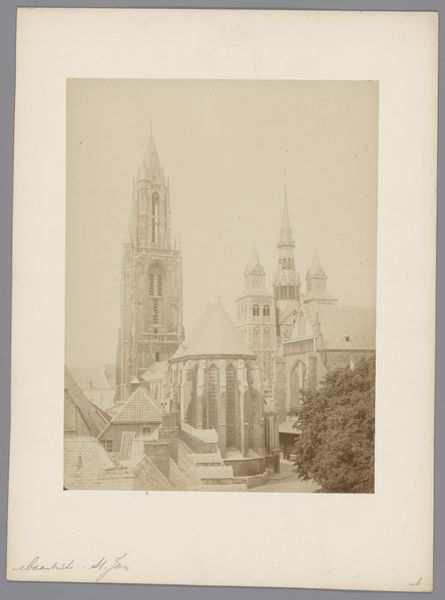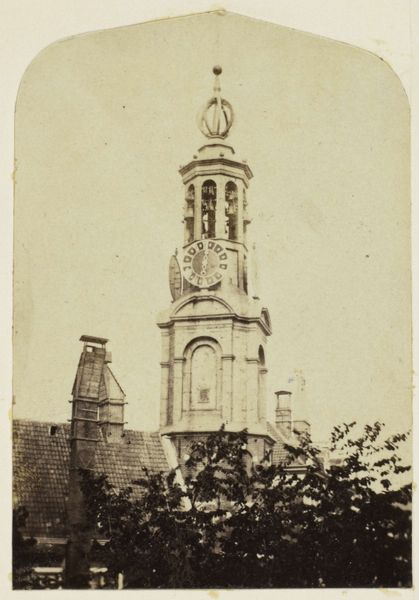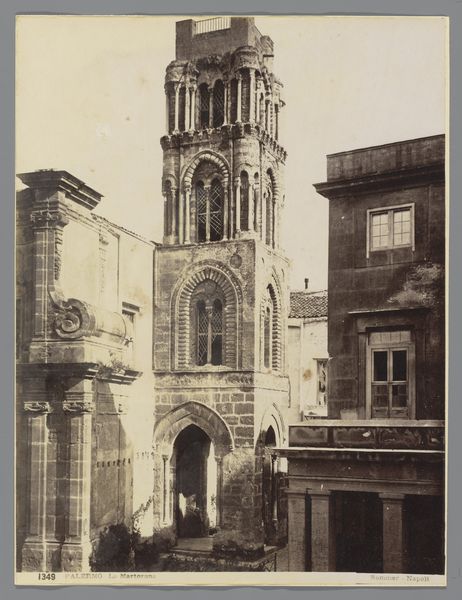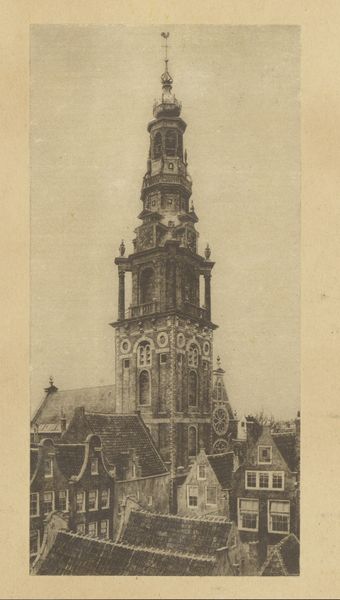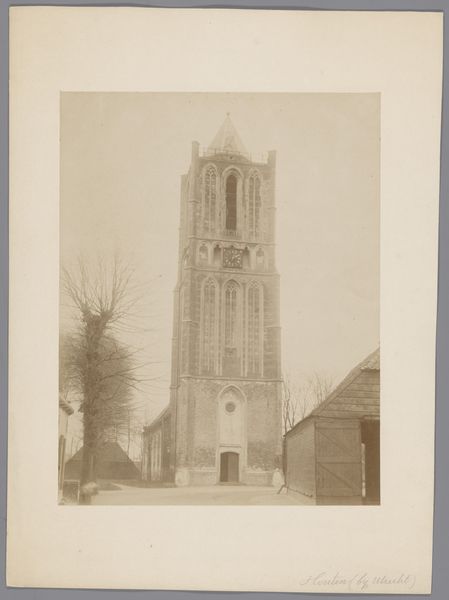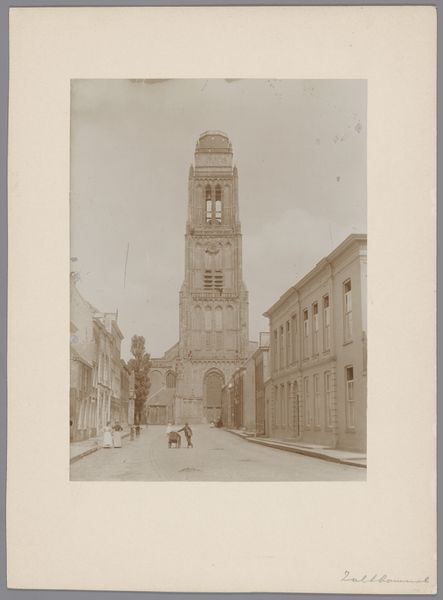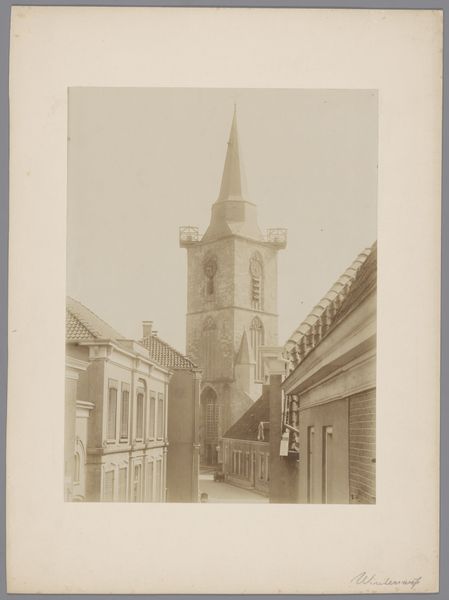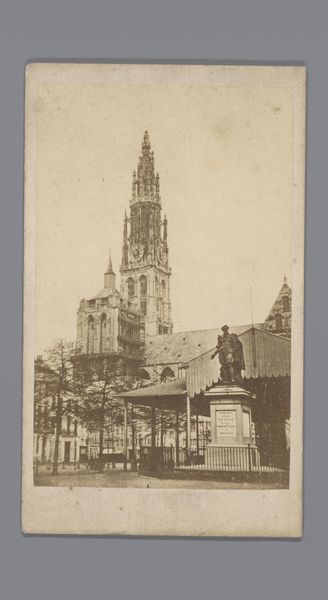
print, photography
#
dutch-golden-age
# print
#
landscape
#
photography
#
cityscape
#
monochrome
Dimensions: height 280 mm, width 226 mm
Copyright: Rijks Museum: Open Domain
Curator: What a striking image. We're looking at "Gezicht op de toren van de Zuiderkerk te Amsterdam," or "View of the Zuiderkerk Tower in Amsterdam," a photograph by Johannes Gerardus Kramer, likely taken between 1875 and 1900. Editor: It's imposing, isn't it? Almost unsettling. It rises up with a kind of stony indifference, the spire fading into a bright sky. There’s something almost lonely about it. Curator: That sense of isolation might stem from its historical context. Late 19th century Amsterdam was undergoing significant urban transformation. Photography, a relatively new medium, offered a way to document and perhaps even grapple with these changes. Focusing solely on the church tower elevates the architecture, but also emphasizes a stark detachment from the broader city. Editor: Right, because from this angle, it completely dominates everything else. I see only rooftops clustered timidly below. It gives the impression of old asserting itself over the emerging. Also, I think its monochrome tone lends it an antique feel. Curator: The monochromatic palette undoubtedly reinforces its connection to the past. What I find interesting is how the image negotiates the role of the church in Dutch society at that time. While it visually dominates, it is still surrounded and intertwined within the city structure. It’s as if to say it holds a critical yet perhaps fading role in civic life. Editor: That makes sense. I was caught by this clock near the top, looking somehow timeless in its own realm, silently observing this world. Yet it must also feel, somehow, trapped by its past role. What was the relationship with Kramer himself? Curator: Unfortunately, relatively little is documented about Kramer's personal motivations. We can tell from his collected work that his lens became a mirror for Amsterdam. His works give particular prominence to civic and ecclesiastical monuments and architecture. His vision offers valuable perspectives on what landmarks Amsterdam chose to memorialize and value through photography. Editor: Thank you. I am so struck how this single image evokes larger themes of Dutch societal evolution in Amsterdam during that time. Curator: Agreed, that makes Kramer's vision enduring. A small print which allows for an almost spiritual interpretation.
Comments
No comments
Be the first to comment and join the conversation on the ultimate creative platform.
